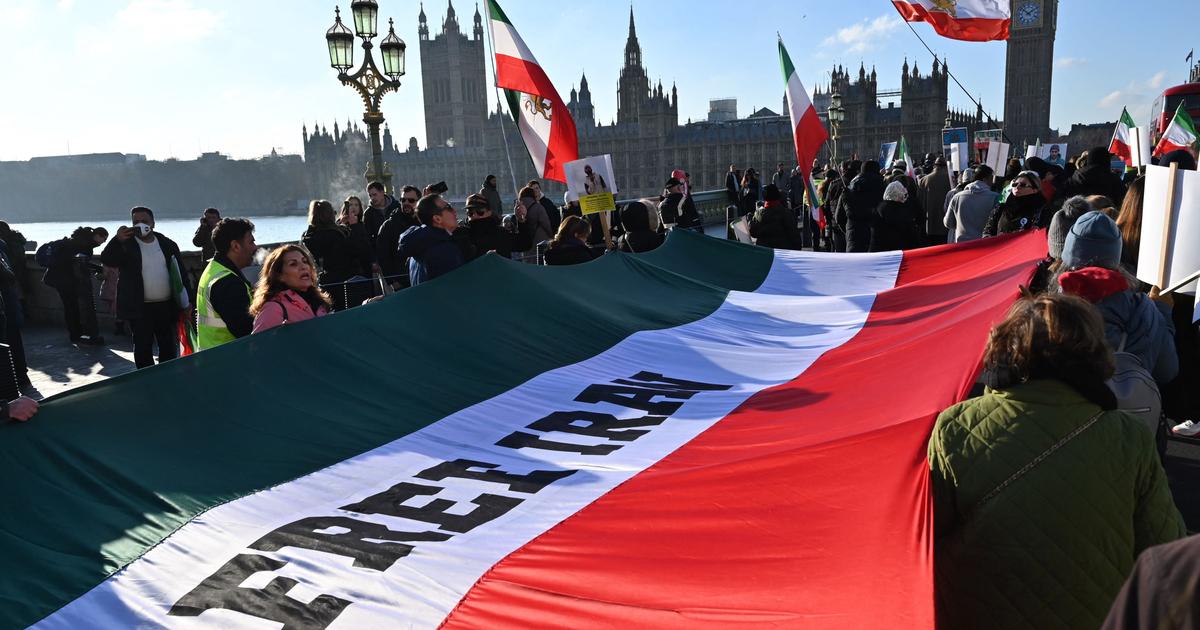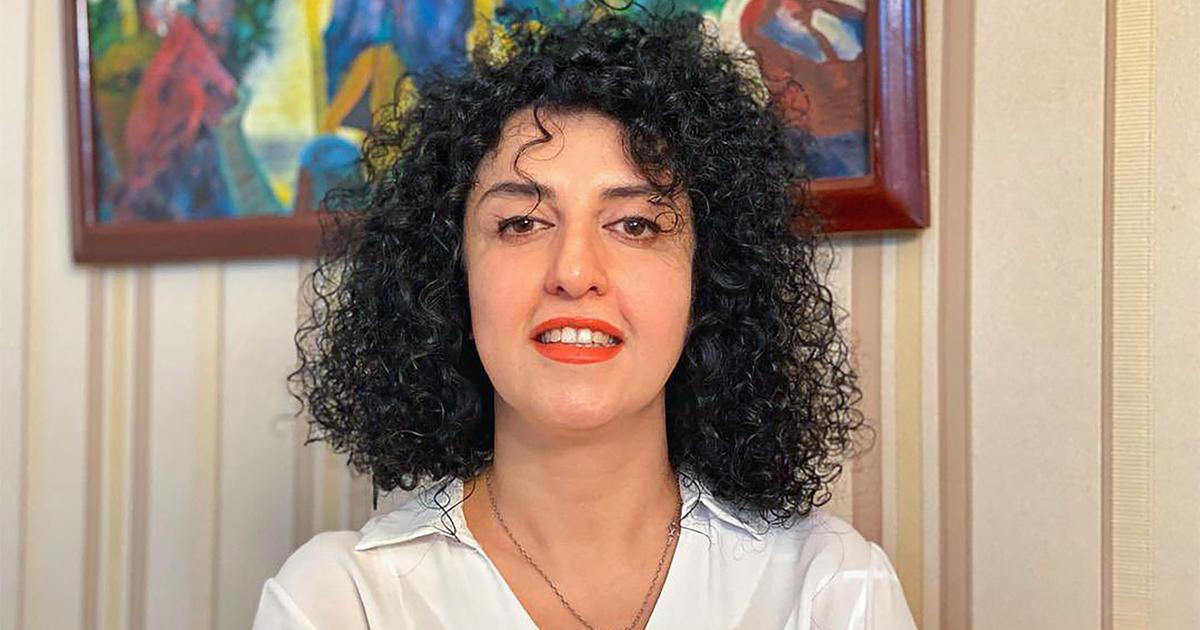Enlarge image
A demonstrator shows a picture of Mahsa Amini at a protest in front of the Iranian embassy in Berlin
Photo: Michael Sohn/AP
22-year-old Mahsa Amini was arrested by the moral and religious police on Tuesday, September 13, while visiting family in Tehran because of her "un-Islamic" clothing.
According to the police, she fell at the station
initially fainted due to heart failure and then in a coma – but this version is controversial.
Her death was confirmed on Friday.
Why was Mahsa Amini arrested?
Amini was taken to the station by police allegedly for "wearing inappropriate clothing."
According to the police, she was to be instructed there about the Islamic dress code.
The information is circulating online that Mahsa Amini was arrested because strands of hair could be seen under her headscarf.
In the days that followed, newspapers showed pictures of Amini, where hair could clearly be seen under the headscarf.
What is the legal situation for women in Iran?
Iran has had strict dress codes since the Islamic Revolution in 1979.
Women are required to cover their hair in public and wear long, loose-fitting clothing to disguise their figures.
Anyone who violates this must expect public reprimands, fines or arrest.
In the metropolises and wealthier neighborhoods in particular, many women now see the rules as rather relaxed, wearing tight-fitting coats and colorful scarves that are pushed back to show their hair – to the annoyance of ultra-conservative politicians.
The government under President Ebrahim Raisi and hardliners in parliament have been trying for months to enforce Islamic laws more strictly.
The moral police sometimes use force when checking the dress code.
What is known about the cause of death?
Police station surveillance video broadcast on state television shows a woman collapsing after speaking to a police officer.
The exact circumstances of Amini's death are unclear.
The Iranian police said there was no "physical contact" between them and the police officers.
According to the broadcaster 1500tavsir, which reports on human rights abuses in Iran, Amini is said to have suffered a blow to the head.
Amini's body was taken to the coroner's office, according to state television.
It is reported on social media that Amini's head was hit against the window after the arrest in the police car, which led to a cerebral hemorrhage.
The police rejected this representation.
After her death, the clinic where the 22-year-old was treated wrote in a now-deleted post on Instagram that Amini was already brain dead when she was admitted on Tuesday.
Amnesty International said there were "allegations of torture and other ill-treatment in custody".
The human rights organization called for an investigation into the circumstances of the woman's "suspicious" death.
White House National Security Advisor Jake Sullivan also cited reports that Amini was beaten in police custody.
Police again denied any responsibility for the young woman's death on Monday.
"It's our job by law to remind women of the dress code," said the capital's police chief, Hussein Rahimi, according to the Mehr news agency.
"What you wear at home is your business, but not in public." The woman was not harmed.
President Raisi announced that he had instructed the Interior Minister to investigate the case.
How do people in Iran react?
Scores of people are now taking to the streets to express their anger at the death of Mahsa Amini.
Demonstrations erupted primarily in the capital, Tehran, and in Amini's home province of Kurdistan.
In Tehran, the police sometimes used water cannons and batons against the crowds.
Demonstrators are said to have set garbage cans on fire and thrown stones.
However, the majority of the protests so far have been peaceful.
Several women took off their headscarves in solidarity with Amini.
In several places, participants in the protests are said to have shouted: "We are not afraid, we are all together" - a slogan that became known especially during the demonstrations after the disputed presidential election in 2009.
Protests are also taking place online: Iranian women have posted videos on social media of how they cut their hair or burn their hijab.
Or they post pictures of themselves without a hat.
Celebrities are also joining the online protest, including well-known actresses Anahita Hemmati and Shabnam Farjajju.
In 2009, people in Iran protested in response to the rigging of the presidential election, after which Mahmoud Ahmadinejad was re-elected president.
The slogan at the time was: "Where's my voice?" Hundreds of dissidents were arrested at the time, and dozens of people lost their lives.
The young Iranian Neda Agha-Soltan died after being hit by a bullet and became a symbol of the protest overnight.
Until the end of the year there were repeated demonstrations, some of which were violently broken up.
The »Green Revolt« failed.
There were also protests in Iran in 2018, mainly because of the economic situation.
The regime had promised freedom and prosperity, but kept few promises.
There was no opposition movement behind the demonstrations, they were more of a public outburst of anger, against high egg prices as well as against Iran's leadership.
The hopes of a "Persian Spring" were not fulfilled.
Can the protests become dangerous for the regime?
Many women are currently supporting the protests, and their outcry also expresses frustration about the difficult economic situation, in addition to anger about the reprisals.
But to overthrow the system on the street is hardly possible.
The Revolutionary Guards are armed and brutal, and the regime is backed by the secret services.
From 2009 and 2018, the authorities have experience of smothering such protests: let the steam out, arrest some, hit hard and the movement shatters.
At the same time, violence against women is viewed internationally as particularly despicable, so the regime could face an image problem if it hits too brutally.
mgo/suk/AFP/dpa/Reuters









